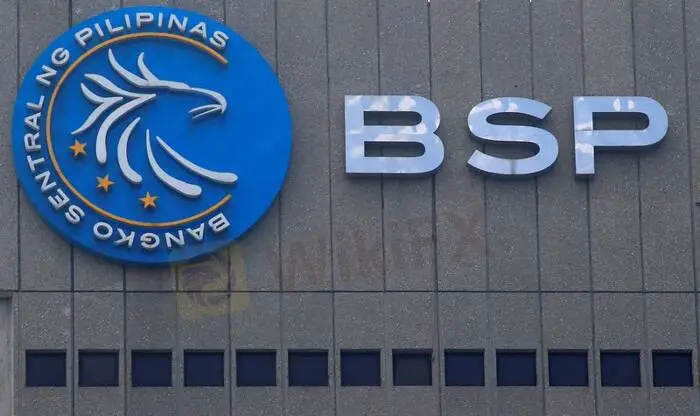简体中文
繁體中文
English
Pусский
日本語
ภาษาไทย
Tiếng Việt
Bahasa Indonesia
Español
हिन्दी
Filippiiniläinen
Français
Deutsch
Português
Türkçe
한국어
العربية
Philippine central bank to keep steady hand on policy lever until Q422 – Reuters poll
Abstract:The Philippine central bank will wait until the end of the year before raising interest rates from a record low 2.0% to support an uneven economic recovery from the COVID-19 pandemic, a Reuters poll found.

With inflation remaining subdued compared to advanced economies and growth in the Southeast Asian nation yet to return to pre-pandemic levels, the Bangko Sentral ng Pilipinas (BSP) will stick to its dovish stance.
All 21 economists in a Feb. 1-14 poll predicted the BSP would leave its benchmark rate at 2.0% at its Feb. 17 meeting.
That was in line with Governor Benjamin Dioknos view monetary policy would remain accommodative as long as required to underpin growth and not necessarily follow the U.S. Federal Reserve which is expected to raise rates next month.
While the Feds last monetary policy tightening cycle led to heavy capital outflows in emerging economies leaving local currencies considerably weaker, economists do not predict a repeat this time.
“We don‘t expect any changes in policy from BSP, at least for now. Governor Diokno stepped up his dovish rhetoric after inflation moderated in January, indicating that he did not want to ’change course in the middle of a recovery,” wrote Robert Carnell, regional head of research for Asia-Pacific at ING.
“However, the dovish BSP stance against the backdrop of a hawkish Fed could translate into additional pressure on the Philippine peso in the near term.”
The Philippine peso has been relatively stable this year, depreciating only about 1% against the U.S. dollar. A Reuters poll taken early last month showed the peso would hover around the current rate this year. [EMRG/POLL]
The central bank was expected to raise its key interest rate to 2.50% towards the end of 2022, followed by 25 basis points in the second quarter of 2023 and another 25 basis points in the July-September quarter, taking rates to 3.00%.
Almost half, seven of 15 respondents, forecast a rate hike of at least 25 basis points by the end of the third quarter, including three who said it would come as early as April-June.
Still, most respondents in the poll said the central bank would be on a wait-and-watch mode before changing gears.
That cautious approach echoes the stance of a few other central banks in Asia, including the Reserve Bank of India and the Bank of Thailand who were expected to maintain an accommodative stance rather than trying to calm inflation.

Disclaimer:
The views in this article only represent the author's personal views, and do not constitute investment advice on this platform. This platform does not guarantee the accuracy, completeness and timeliness of the information in the article, and will not be liable for any loss caused by the use of or reliance on the information in the article.
Read more

Blockchain Decentralization: Empowering a Trustless Future
In recent years, blockchain technology has rapidly evolved from a niche innovation behind Bitcoin into a transformative force across industries. At its core, blockchain decentralization refers to the distribution of authority and decision-making away from a central entity and into the hands of a distributed network of participants. This shift redefines how data is stored and verified and paves the way for trustless, transparent, and resilient systems that challenge traditional centralized models.

The president of @Liberland, @Vít Jedlička come on stage, dialogue on trading security.
The 2025 WikiEXPO Hong Kong Station is about to grandly open. the president of @Liberland, @Vít Jedlička come on stage, dialogue on trading security.

Countdown: 1 day.WikiEXPO2025's first stop, Hong Kong, is about to open.
⏰ Countdown: 1 day. WikiEXPO2025's first stop, Hong Kong, is just tomorrow. Focus on transaction security and explore new investment opportunities. ???? Get ready to start now. See you tomorrow.

JustForex vs JustMarkets: A Comprehensive Comparison in 2025
Selecting the right forex broker can make the difference between trading success and frustration for most investors, especially retail investors. As retail traders gain unprecedented access to global markets, the choice between platforms like JustForex and JustMarkets becomes increasingly significant. Both brokers offer some shining features within the forex and CFD trading space, but their approaches differ in some areas.
WikiFX Broker
Latest News
The Withdrawal Trap: How Scam Brokers Lure Victims into Paying More
FCA to Investors: Think Twice Before Trusting These Brokers
Trump\s tariffs: How could they affect the UK and your money
Trump gambles it all on global tariffs he\s wanted for decades
TradingView Brings Live Market Charts to Telegram Users with New Mini App
Trump tariffs: How will India navigate a world on the brink of a trade war?
IG Group Acquires Freetrade for £160M to Expand UK Investment Market
U.S. March ISM Manufacturing PMI Released
Should You Beware of Forex Trading Gurus?
Exposed by SC: The Latest Investment Scams Targeting Malaysian Investors
Currency Calculator







